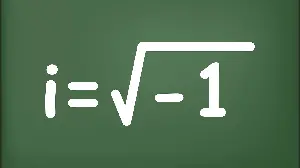Imaginary numbers
Published:
 The idea of “imaginary” or “unreal” numbers first arose when mathematicians encountered equations that had no solutions in the real number system. For example, the equation x^2 + 1 = 0 has no solutions in the real numbers, since the square of any real number is non-negative. However, it was noticed that if we introduce a new number, denoted by the symbol “i”, such that i^2 = -1, then the equation x^2 + 1 = 0 has two solutions, namely x = i and x = -i.
The idea of “imaginary” or “unreal” numbers first arose when mathematicians encountered equations that had no solutions in the real number system. For example, the equation x^2 + 1 = 0 has no solutions in the real numbers, since the square of any real number is non-negative. However, it was noticed that if we introduce a new number, denoted by the symbol “i”, such that i^2 = -1, then the equation x^2 + 1 = 0 has two solutions, namely x = i and x = -i.
The concept of imaginary numbers was initially met with skepticism and resistance by some mathematicians, who regarded them as a mathematical curiosity or even as absurd. For example, the mathematician and philosopher René Descartes expressed doubt about the reality of imaginary numbers, stating that “I do not conceive how there can be a quantity that is the square of minus one.”
However, other mathematicians recognized the usefulness of complex numbers and developed techniques for working with them. The Swiss mathematician Leonhard Euler was particularly influential in developing the theory of complex numbers and using them to solve mathematical problems. In particular, he developed the formula e^(ix) = cos(x) + i sin(x), known as Euler’s formula, which relates complex numbers to trigonometry.
The development of complex numbers was furthered in the 19th century by mathematicians such as Carl Friedrich Gauss, William Hamilton, and Augustin-Louis Cauchy, who extended the theory of complex numbers to include the idea of “analytic functions,” which are functions that can be expressed as a power series in the complex variable.
Today, complex numbers are a fundamental part of mathematics and are used in many different areas of science and engineering. They are used to represent phenomena that have both real and imaginary components, such as electrical circuits and quantum mechanics. Complex analysis, the study of functions of a complex variable, is an important branch of mathematics that has many applications in physics, engineering, and other fields.
In conclusion, the invention and development of imaginary numbers are a testament to the power of human creativity and ingenuity. What started as a mathematical curiosity has become an essential part of modern mathematics and science. The history of imaginary numbers is a reminder that seemingly impossible problems can often be solved with a little creativity and a willingness to think outside the box.